Picture this: you’re scrolling through your social feed, and you see a post by well-known athlete endorsing a sporting goods store. It’s a great photo, but it also feels very salesy because it looks so perfect (almost too perfect). Not to mention, you’ve seen this celebrity in various other advertisements.
Now, let’s imagine the same scenario, but this time instead of the celebrity photo, you see a post by your favorite fitness blogger. It’s also a promotional post for the same sporty brand, but it feels more authentic. The blogger clearly took time to craft an engaging caption that connects with their audience.
Which of the photos would compel you to check out the said sporty brand?
If you went for the second scenario, then you’re part of the whopping 92% of consumers who trust influencers more than traditional celebrities.
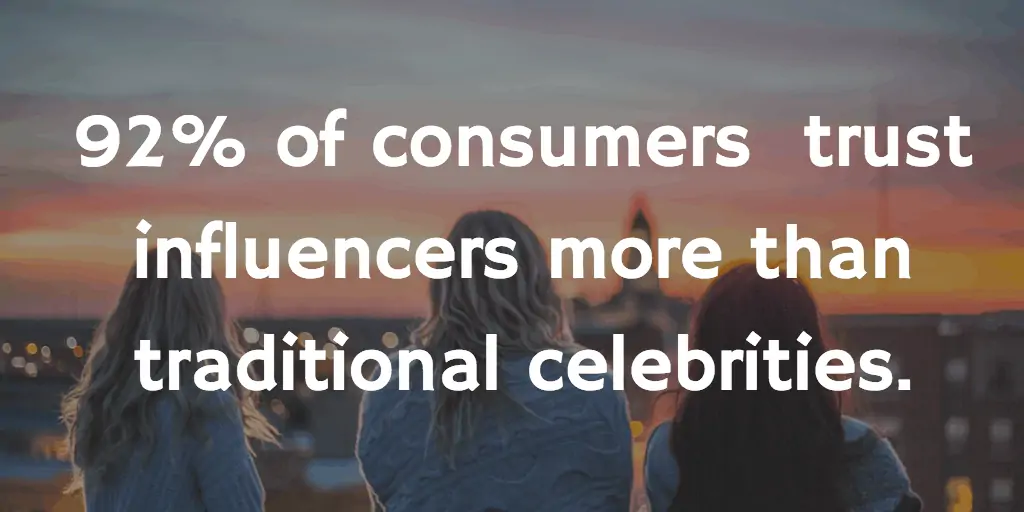
[toc]
The tide has shifted in the world of advertising and endorsements. Consumers today no longer trust polished ads promoting products and services. Instead, shoppers are turning their attention to influencers — relatively normal people who have amassed lots of followers.
If influencers aren’t part of your ecommerce marketing mix, you could be missing out on opportunities to get in front of your target customers.
In this guide, we’ll show you the ins and outs of influencer marketing for ecommerce. You’ll learn how to find influencers, what tools you should use, and how to ensure that you select the right ones. We’ve also included some tips on working with them and cultivating harmonious relationships with your collaborators.
To help keep your campaigns on track, we’re also giving some good and bad examples of influencer marketing.
Let’s dive in!
Start with audience research
Get to know your target customers before attempting to search for influencers. Be clear about who you’re targeting. This is particularly important if your products appeal to multiple types of audiences.
For example, a store that sells fitness apparel may attract consumers ranging from 20-something single women to mothers who are looking to get back into shape. If this is the case, then select one market segment per influencer campaign, so your messaging stays on target.
Once you’ve decided on your market, put their key demographic and social info down on paper. How old are they? What’s their educational level? What websites do they visit?
If you’re already collecting customer data, then most of these things should be fairly easy to find. But if you want to go deeper, you could try the following:
Send surveys – Survey your customers to discover additional psychographic and social info that you may not be aware of yet. You can also take this opportunity to ask about the websites they visit and the influencers they follow.
Look into a handful of shoppers – If you know some of your customers personally, then do a bit of online and social media digging. Which social networks are they active on? What types of content are they sharing? What hashtags are they using? These are just some of the questions you should be asking.
Why go through all the trouble of audience research? Getting to know your target audience will help multiple aspects of your influencer campaign.
- Deep audience research will help you craft the right messaging.
- It will enable you to identify the best influencers (more on this in a bit).
- It will help you identify the best platforms for your campaign.
Determine your platform
Speaking of which, determining the platform on which to run your program is a critical step in influencer marketing. Should you do it on Instagram or Snapchat? What about Twitter and YouTube?
The answer depends on two things: your audience and objectives.
First, figure out which sites or apps are popular with your target audience. Which networks do they frequent and how are they using different social platforms? Then you have to consider your campaign goals. Are you looking to drive awareness? Do you want traffic and sales to come out of the campaign?
To give you more clarity on this step, here’s a quick overview of the popular social platforms for influencers, and how you can use them in your campaigns:
Instagram Influencer Marketing for Ecommerce
- Great for reaching younger demographics, as more than 90% of Instagram users are under 35, according to Business Insider.
- Instagram is better for growing your social following and brand awareness.
- While you can generate traffic and sales from Instagram, the process is still quite cumbersome on the app.
- Instagram Stories continues to gain popularity, making it an excellent platform for delivering real-time or spontaneous content.
Snapchat Influencer Marketing for Ecommerce
- Great for reaching even younger audiences. According to Statista, as of 2017, 83.4% of U.S. mobile phone users aged 18 to 24 years were active on Snapchat. Additionally, 78.6% of users ages 18-24 were active Snapchat users, while less than half (47.6%) of 25 to 34-year olds were active on the app.
- Snapchat is also ideal for promoting real-time content. As BigCommerce puts it, “Snapchat influencers work well for building awareness and creating buzz around real-time events like product launches or products targeting young audiences (think gummy bears).”
- If you’re looking to drive traffic or sales directly from your campaign, Snapchat may not be the best choice.
Twitter Influencer Marketing for Ecommerce
- Twitter is excellent for reaching millennials. Hootsuite cites, “Thirty-six percent of Americans aged 18 to 29 years old use Twitter, more than any other age group. Usage drops as age increases, with 22 percent of those aged 30 to 49 using the service, 18 percent of 50- to 64-year-olds, and just 6 percent of those aged 65 and up.”
- The jury’s still out on whether Twitter influencer campaigns can drive sales directly. But a Nielsen study (commissioned by Twitter) found that “one in four new vehicle purchasers in the U.S. used Twitter as an input to their vehicle purchase decision.”
- Twitter is ideal for driving conversations. Twitter chats continue to be popular, and they help influencers and brands tell stories and inform their audience about particular topics.
- Doing something newsworthy? Taking a stand on a particular issue? Twitter is the platform for you. Seventy-four percent of US adults using Twitter say they get their news from the site.
YouTube Influencer Marketing for Ecommerce
- YouTube is ideal for reaching millennials and (younger) boomers. Research has shown that people ages 25-44 watch the most YouTube videos.
- Sixty-two percent of YouTube viewers are male, and 38% are female. It’s important to note, though, that YouTube’s user base is incredibly huge (over 1 billion users) so the audience is significant either way.
- YouTube can be used both for branding and traffic campaigns. As BigCommerce notes, “YouTube is particularly special because it works well at every part of the funnel — offering both visual branding opportunity and attributable traffic to your site.”
How to find influencers for your ecommerce brand
At this point, you should have decided on the best social media platform for your ecommerce influencer campaign. The next step is to identify individuals to work with. Now, if you did your audience research, then you should have a pretty good idea of which influencers are prominent in your industry.
But in case you need help with this or want to find even more influencers, you can tap into the following:
Your existing followers
The best influencers might be sitting right under your nose (or rather, in your CRM). Before going “out there” to find people to work with, look into your existing customers first.
“My biggest tip for brands looking for loyal influencers to work with is to start tracking who is already representing them,” says Laura Lindsay (@thelauralindsay), a blogger and YouTuber.
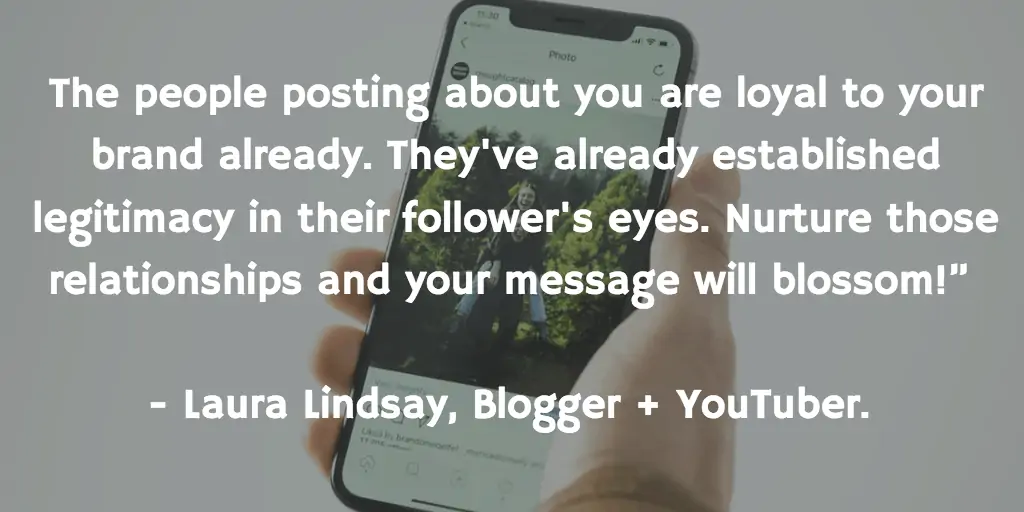
“Who are your biggest fans? Who’s tagging you in their Instagram Stories, in their original visual content, or YouTube videos? It always amazes me when brands miss out on opportunities right under their noses. The people posting about you are loyal to your brand already. They’ve already established legitimacy in their follower’s eyes. Nurture those relationships, and your message will blossom!”
So, go through your social followers and identify people who are already talking about your brand. Look into their social profiles and if they have a large or engaged following, consider approaching them for collaborative opportunities.
You’ll uncover a lot of potential influencers with some savvy social media searches.
For example, if you’re going to run an Instagram influencer marketing campaign, then explore the posts under relevant hashtags. If you’re going to be on YouTube, enter search queries that your target customers would be searching for a look at the channels covering those topics.
There are also a handful of tools out there that can streamline your search. Most of them overlap in terms of features, so it’s best to check them out individually and see what works best for your brand, budget, industry, and campaign.
Start with the following:
Peg – Peg enables you easily identify people to collaborate with using features like advanced search, influencer comparison, and brand safety checker. As for campaign management, this tool can help track your results thanks to real-time monitoring, reports, and industry comparisons.
Reachbird – Like Peg, Reachbird has tools to assist you in all stages of your campaign, from finding people to measuring success. Some of its notable features include its keyword-based search engine, data-rich insights, content planning, and quantitative + qualitative analytics.
Scrunch – This influencer marketing platform offers an array of tools to help you find influencers and manage campaigns. It has capabilities such as influencer search, bookmarks, alerts, and more.
Buzzoole – What’s interesting about Buzzoole is that in addition to its influencer search and campaign management features, it also offers automation through AI. According to Buzzoole’s website, their tool automates the selection of Creators by “finding the ones that are aligned with your Brand and allowing you to involve your target audience naturally.”
Deep Social – Deep Social is an affordable tool that serves as “an influencer ranking, discovery, and analytics platform providing in-depth insights into demographic & psychographic data of Instagram marketing influencers and their audience.”
Have a process
Aside from tools, having a method for identifying and reaching out to influencers will make your life immensely easier. Be organized and craft a procedure for your campaign.
Meg Raiano of reCreativeAGENCY shares their process for connecting with influencers.
“Typically when we start outreach for our clients, we build a list of 50-100 potential influencers in their category with a seemingly similar target demographic. Of course, that’s all speculation based on what we can see and any information that can be found on the internet,” she says.
“After making that list, we reach out to each influencer individually to find out more about what it is that they believe their market is, if they have any cost associated with posting, would the post be on multiple social platforms or just in one spot, etc.”
“Typically we end up with 5-10 influencers (depending on the product and cost) for each of our clients and they are highly suited for the market we’re in within both demographics and brand strategy.”
How to decide which influencers to work with
Got your list of potential influencers? Great. Now it’s time to vet them to figure out who the best fit would be. You can do this by reaching out to and talking to them about their audience and content.
If you’d like to further vet influencers, we recommend the following:
Be wary of influencers who ONLY publish sponsored content
Go through each individual’s feed and see to it that there’s a healthy mix of promotional as well as authentic, high-value content. If there’s a disproportionate amount of ads and endorsements, you should find someone else.
“One of the main things we look out for are people who are only doing ‘salesy’ posts,” shares Raiano. “It’s imperative to your influencer marketing strategy that your brand message will be carried through to the influencers you choose.”
Jessica Postiglione, CEO and co-founder at OLIKA, echoes this and says that they don’t work with influencers “who are solely focused on monetary compensation for posts. Their feeds come across as billboards, and their followers are often not very engaged. Also, beware of high followers count and low engagement on posts. That is a sign that the follower count may be inflated with purchased accounts.”
Speaking of high follower counts…
Measure engagement, not just followers
Follower count isn’t everything. Don’t get mesmerized by large numbers. As Shannon Menard of Power Digital Marketing puts it, “many e-commerce merchants make the mistake of assuming that people who have hundreds of thousands of followers are the ones who will make the biggest impact. While an influencer’s number of followers is an important factor to consider, engagement is the best determinant of success.”
That said, Menard adds that ecommerce merchants should try to work with influencers who have at least 10,000 followers, at least when it comes to Instagram. “Influencers who set their page up as a business profile and have over 10,000 followers can include links within their Stories, giving brands the ability to track how many people clicked on the link and how many actually converted. Through Google Analytics you can see which influencers pushed the needle and which didn’t, ultimately helping you identify which influencers you want to work with again in the future.”
The key takeaway here? Don’t just look at someone’s follower count; be sure to measure their engagement as well. To do this, Scrunch recommends the following formula:
Average Engagement Rate (%) Per Post = Total Engagement / Follower Counts / Number of Posts x 100
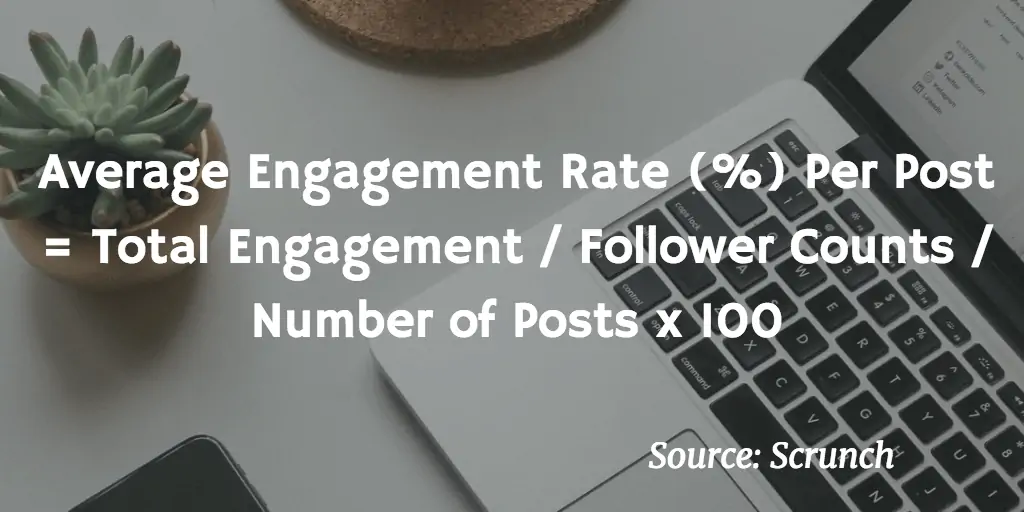
Now, a “good” engagement rate apparently varies depending on the platform. As Scrunch puts it:
We analyzed millions of data points to come up with average and above average engagement rates across each social platform. Our analysis showed that the average (i.e. 50th percentile) engagement rate on Twitter is only around 0.06%, and the 99th percentile (i.e. the top 1%) is only around 2.7%. You can compare this to Instagram, where our analysis showed that the average profile has an engagement of 2.7% and the top performing profiles have an engagement rate of a massive 17.8%.
Working with influencers
At this stage, you already have a shortlist of people to work with and you’re about to connect with them (or maybe you already have). The following pointers will help ensure a harmonious working relationship between you and each influencer.
Build relationships
“[Don’t] rush the process of finding the perfect influencer,” advises Melanie Balke, Head of European Markets & Growth Strategist at BAMF Media.
Balke says that ecommerce merchants should focus on cultivating relationships even before reaching out to them,
“You can build a relationship by engaging with their content, maybe even giving the shoutouts on your own account or reposting their things without any expectation for something in return. This will get them to notice your account and as the law of reciprocity shows might even get you more beneficial terms once you reach out to establish a relationship.”
She continues, “I’ve seen this technique work well and even had influencers reach out before I did. The most important thing is you want the influencer to actually like you and your product. So don’t just pay them to say they do, establish a relationship and get them to like it before you collaborate.
Be genuine
You wouldn’t want to receive canned outreach messages from other companies, and guess what? Neither do social influencers.
So, rather than sending a templated message to everyone on your list, take the time to go through their social profiles and website and use what you know about them to personalize your outreach.
“It will come across as far more genuine if your campaign pitch and communications are tailored to them,” says Amy Baker at Content Career.
“Make sure you use their real name, not their handle. Discuss why their particular content is a good fit, and reference their old videos or blogs if you can.”
Free samples could work, but respect the fact that other influencers will need to be financially compensated
Giving out free products might work for influencers who are just starting out, but recognize (and respect) that those who are already established in their industry may ask for monetary compensation.
“Consider the amount of time it will take the influencer to create their content, and how many people will see it, and then compensate accordingly,” says Baker. “A good relationship with a growing influencer could be worth far more to you later if you compensate fairly now.”
In the same vein, always be professional when dealing with influencers. As Faye Lessler of Sustaining Life puts it, “Influencers spend time, energy, and hard-earned expertise creating content in collaboration with brands so that they can present the best possible image and most impactful story to their cherished audience. It is for these simple reasons that influencers expect to be treated as professionals and paid accordingly.”
“Treat influencers as you would treat any other employee, contractor, or freelancer — with mutual respect,” she adds. “Influencers work just like anyone else does to make an income and maintain their reputation, and when they are treated and compensated accordingly, they are much more likely to work with you again and again.”
Give them room to be creative
Your influencer campaign needs to come across as authentic, so avoid giving influencers rigid scripts. It’s ok to provide talking points and guidelines, but be sure to provide them with ample room for creativity.
Baker advises that you “give the influencer a list of the major benefits and let them reconstruct them using their own language. It will come across as more natural and trustworthy. Not to mention, most good influencers will turn down brands who mandate scripted content.
Influencer marketing case studies in retail
Now that we’ve discussed influencer marketing best practices, it’s time to look at what campaigns actually look like. The following examples will give you a better idea of what to do — as well as what not to do — when running an influencer campaign.
Good examples of influencer marketing
Make your products part of a bigger story – When it comes to influencer marketing, it pays to be more creative. Rather than just asking someone to blatantly endorse your product, see if you can naturally incorporate your brand into their content.
One great example of this comes from homeware brand Simplehuman’s campaign with Wong Fu Productions, a filmmaking group that creates (very popular) YouTube sketches and short films.
Wong Fu Production created an entertaining and highly relatable video about “adulting” and the challenges that come with growing up. The video was meant to promote Simplehuman’s trash cans, but it did so non-salesy way. For example, rather than blatantly advertising the Simplehuman brand, their products were naturally incorporated into the script and they weren’t the main focus of the story.
The video proved to be successful and generated over a million views to date. Viewers also commended Wong Fu, because of the natural execution of the sponsored content.
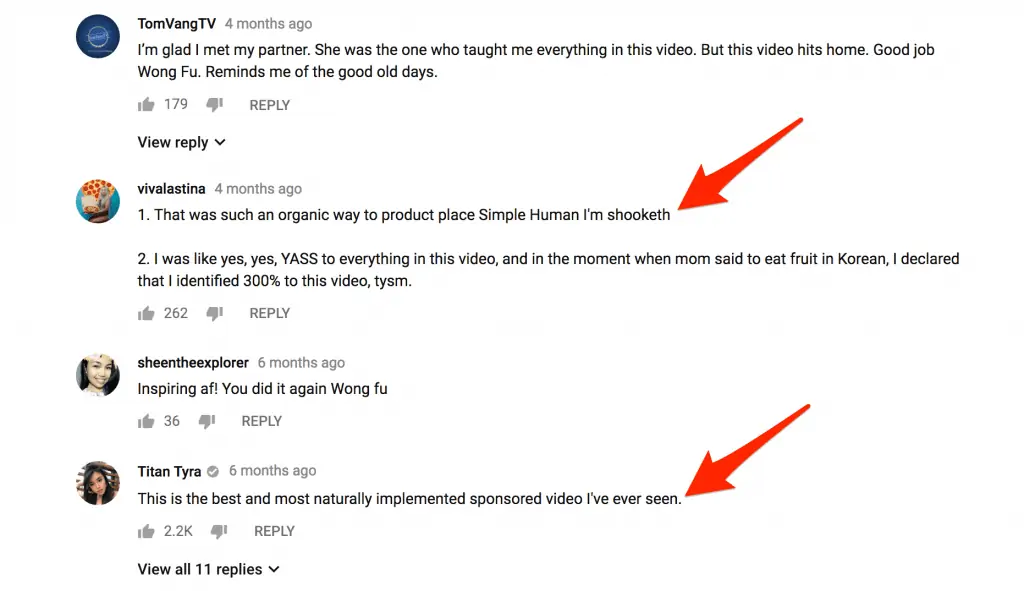
Watch it yourself below:
[su_youtube url=”https://www.youtube.com/watch?v=ZOgvWIulxho”]
Tap into your existing fan base – Earlier, we talked about the benefits of using existing customers in your influencer campaigns. One brand that did just that is Sperry, a classic boat shoes & preppy apparel retailer.
According to Balke, Sperry noticed that they had many loyal customers who were already creating great content.
“They then invited those customers that already posted great visuals to develop official content for their Instagram account. They partnered with over 100 micro-influencers and generated an impressive amount of very high-quality content.”
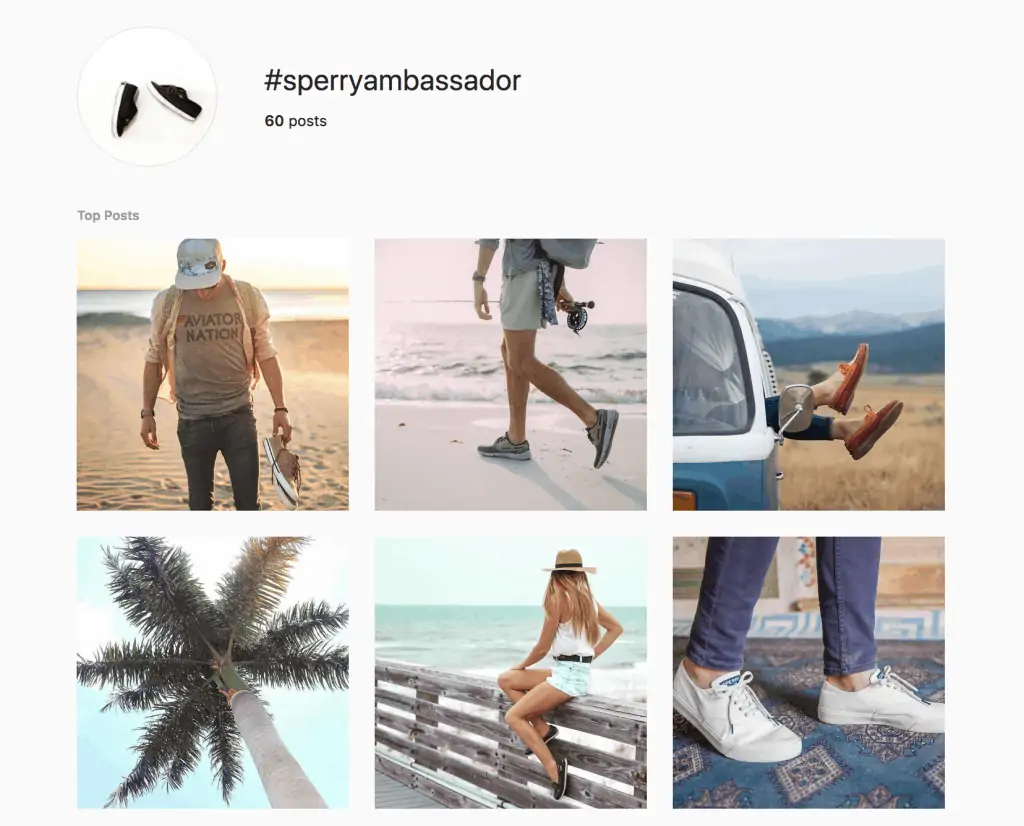
“One of their top performing posts of 2017 comes from these efforts. As far as I know, these micro-influencers weren’t paid, but the trade was rather the exposure they gained when Sperry posted their picture and tagged them. They are now expanding this program to include athletes and other sea-inspired influencers out there in a more formal way.”
Co-create with your best influencers – Develop strong connections with key influencers and then take your relationship to the next level by co-creating something with them. Go beyond social media posts and see if you can produce something more tangible with your partners.
Cosmetics brand Morphe did this quite well. Morphe has always been big on influencer marketing and has invested a lot of their resources in YouTube collaborations versus traditional advertising.

But Morphe took their influencer strategy to the next level. In 2017, the brand released the Morphe x Jaclyn Hill Palette, an eyeshadow palette that they co-created with beauty influencer Jaclyn Hill.

The results were tremendous. Fans loved the palette, and before the end of the year, over 1 million Morphe x Jaclyn Hill Palette were sold.
Bad examples of influencer marketing
So far we’ve talked about what to do when running an influencer campaign. But what about the things you shouldn’t do? Let’s explore…
Failing to be upfront about sponsored content
Influencer campaigns may not fall under “traditional” advertising, but they still need to comply with certain advertising guidelines and standards. Failure to do so could land your brand in hot water. Just ask Lord & Taylor.
In March 2015, the apparel retailer launched an Instagram campaign that involved 50 high-profile fashion bloggers, with each influencer posting a photo of herself on Instagram wearing the same Lord & Taylor dress. All of the photos were posted on the same weekend, so people quickly noticed the dress.
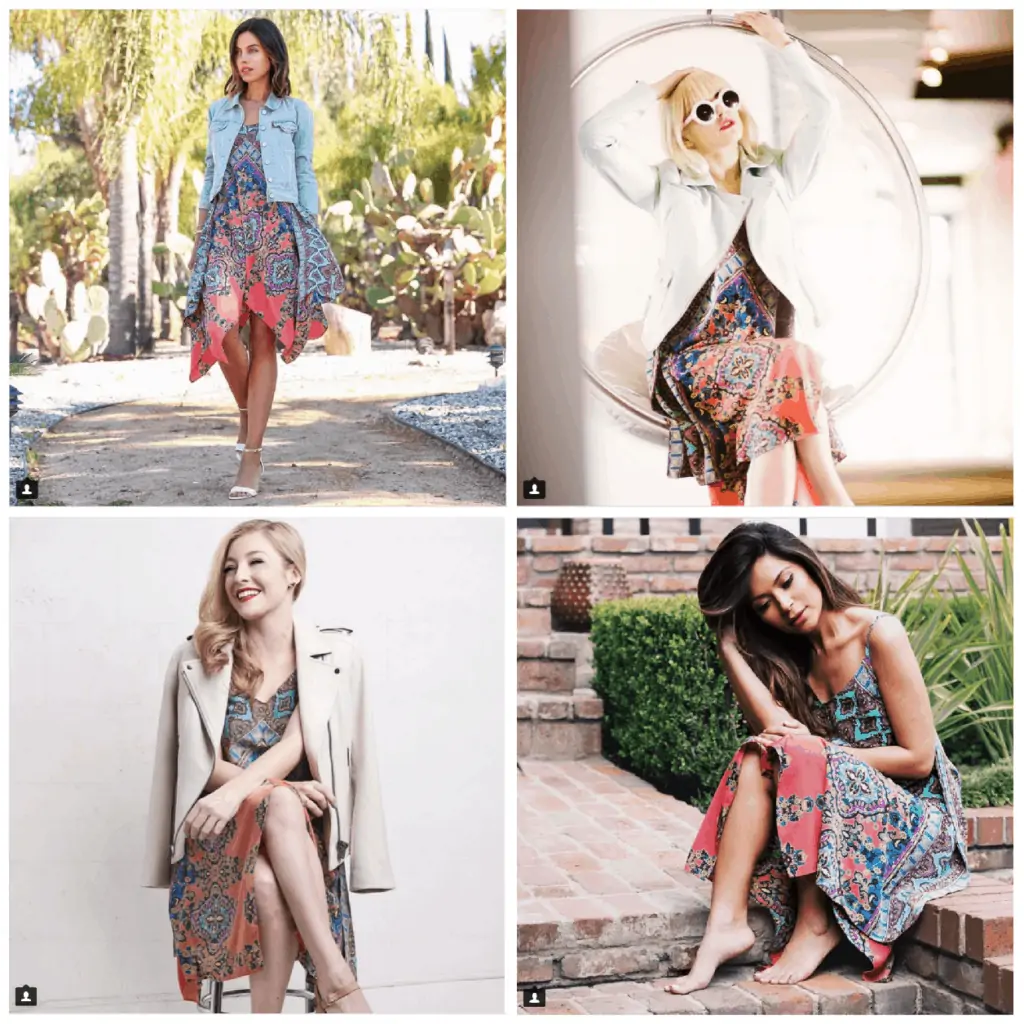
From a sales and marketing perspective, the campaign was a huge success. AdWeek reported that “many of the posts generated more than 1,000 Likes each, with several surpassing 5,000 Likes and some reaching rarified levels like 13,000 Likes.” The initiative generated sales as well, and the dress sold out that same weekend.
But there was a significant issue: the influencers involved didn’t clearly disclose the “sponsored” nature of their posts. This was in violation of the Federal Trade Commission’s (FTC) digital advertising guidelines, which prohibit deceptive marketing.
The incident launched an investigation, and in 2016, Lord & Taylor agreed to settle the FTC charges that it deceived consumers through the campaign.
In an official statement, Jessica Rich, Director of the FTC’s Bureau of Consumer Protection, said: “Lord & Taylor needs to be straight with consumers in its online marketing campaigns… Consumers have the right to know when they’re looking at paid advertising.”
Giving the influencer a script and not developing a healthy relationship
“A great example of what happens when you work with an influencer without really establishing a brand relationship is the influencer campaign that was run with Scott Disick,” says Balke.
“In the picture below you can see that Scott just copied and pasted whatever the brand wanted him to say.”

“That’s by far the worst thing as you always want your influencer to authentically, in their own voice and words, speak about your brand. Obviously, the mistake here made it even more apparent,” she adds.
Final words
Influencer marketing can yield tremendous results for ecommerce brands. Influencers can help tell your stories, get you in front of the right audience, and even drive sales. But just with like any form of marketing, you need to be ethical with your efforts and be professional when dealing with collaborators.
We hope this guide helps you jumpstart a successful campaign. And if you ever need help with launching your influencer program, don’t hesitate to get in touch!
